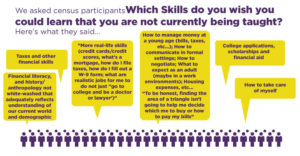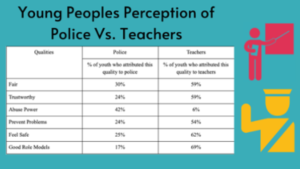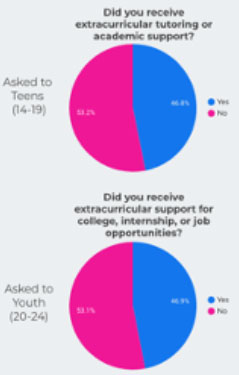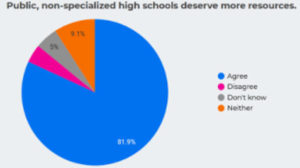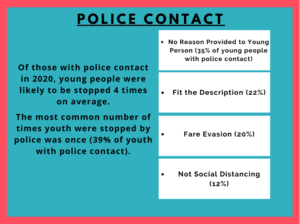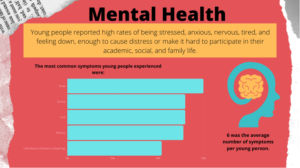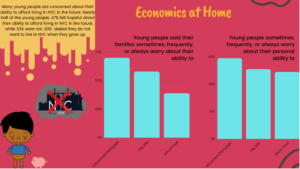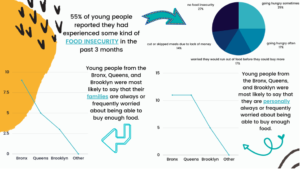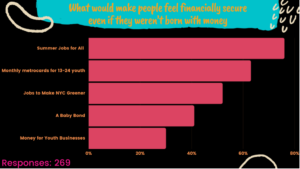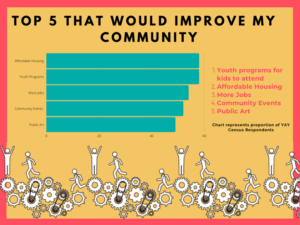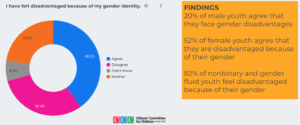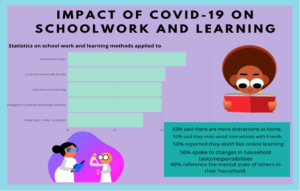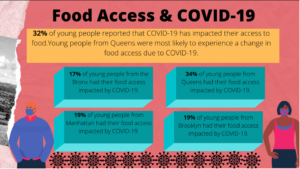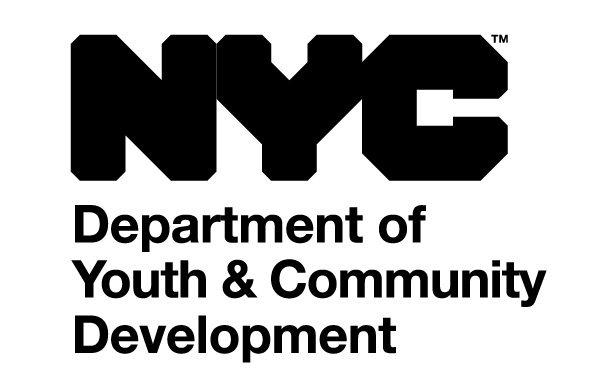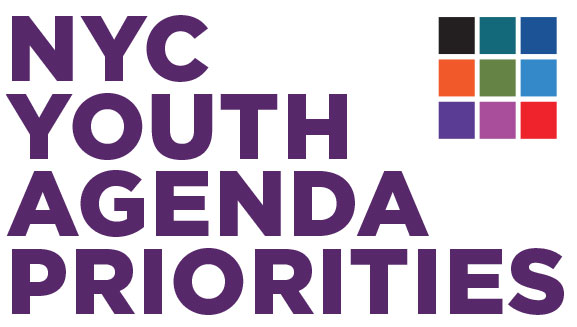The year 2020 proved to be a year when systemic racism was exposed and protests against it exploded internationally. The murders of George Floyd and many others were broadcast on every media platform and highlighted the injustice and inequities that communities of color experience. Collectively, young people took notice and took action. Young people have been heavily impacted by these inequalities, which is why we need to be at the forefront of the drive for change. The priorities are issues that will determine young people’s prospects and the quality of our lives.
Furthermore, as youth, we are not given a seat at the table; we are constantly ignored and our needs and wants are not prioritized in comparison to the rest of society. After months of collecting data about what we need, we have compiled the #NYCyouthagenda. So why does the youth agenda matter? It matters because all youth matter and all youth deserve to have access to resources and experiences that give us an even playing field to reach our goals, support our families, and thrive. However, we must not turn a blind eye to color and acknowledge the pervasiveness of systemic racism. The youth agenda priorities and recommendations are framed with the understanding that race intersects every aspect of life. The recommendations reflect all youth in and across New York City with the understanding that race, ethnicity, religion, gender and gender identity, and other social constructs further impede a youth’s ability to access resources and opportunities. As you review the recommendations ask yourself whether the fact that a young person is a white male or a black male would make a difference. Similarly, if the young person is female, transgender, or a Muslim, would opportunities be the same? This agenda provides authentic input from young people on how to address the disparities.
Objectives
- Amplify issues affecting youth in NYC
- Pose youth-generated recommendations
- Focus on youth as a way to create a better NYC for a Methodology
YOUTH AGENDA
- Expand Social-Emotional Learning and increase the number of social workers in schools and youth programs.
- Remove the police from the schools.
- Redefine safety in schools with participatory budgeting processes where students, parents, and administrators decide how to spend money on safety.
- Support students, educators, parents, and policy makers to reimagine the School Safety Division as it enters into the control of DOE.
- Provide experiential training developed in partnership with youth for counselors and teachers on communication, conflict resolution, restorative justice, and cultural competency.
- Implement a curriculum that is diverse, transparent, and critical.
- Implement restorative justice initiatives in all middle and high schools.
- Make sure that restorative justice stays true to its origin, giving it not only the credit but also upholding its original purpose
- Teach life skills such as financial literacy, filing taxes, etc.
- Establish a more relatable and specialized curriculum that matches the career and life goals of young people.
- Give more resources to public, non-specialized schools.
- Engage students in decisions on school curriculum, programming, and funding.
- Ensure that all students in NYC have access to the same opportunities regardless of school district.
- Reallocate funding (i.e., divest for the NYPD and reinvest in community-based organizations, social services, youth programs, and mental health programs.
- Create intergenerational committees that outline the action items to realize their resounding recommendation to defund the police.
- While defunding police is the ultimate goal, the city needs to immediately retrain police officers in how to better connect and support minority communities, assessing needs of LGBTQ+ people and black, indigenous, people of color (BIPOC) (especially black people), and young people
- Require that police work where they live.
- Do not allow training to become a stalling tactic. Training must be funded and implemented simultaneously as police change their practices.
- Eliminate the number of police stops of young people for no given reason or minor infractions, such as fitting the description of a perpetrator, loitering, fare evasion, and not social distancing.
- Create a separate resource, such as an emergency mental health service, that handles 911 calls pertaining to mental health, domestic violence, and other situations that do not require a gun.
- Enact stricter gun control laws/policies to promote safety and reduce gun violence.
- Create an intergenerational committee and allocate funding to implement more grassroots, BIPOC-led community initiatives for ensuring public safety.
- The City should collaborate with community safety organizations/teams that have already developed processes on how to deal with emergencies in their own neighborhoods and make them intergenerational.
- For schools:
- Employ child/adolescent psychologists to train teachers on mental health issues. This includes training on how to identify students who may be struggling and ways to support students’ mental wellness with, for example, breaks during class or more physical activity.
- Expand the City initiative to provide social-emotional learning to elementary students to all levels of public schools.
- Provide sex education that includes consent, respect for body autonomy, and LGBTQ+ education and takes into account individuals’ gender identity, gender expression, and sexual orientation.
- Provide mental health education with space/networks of trusted relationships who have been trained to destigmatize mental health and other resources for youth.
- Increase the numbers of LGBTQ+, BIPOC, and trauma-informed counselors and mental health resources to attend to the needs of underserved youth.
- For community:
- Develop initiatives for community-based emergency mental health services, so we don’t have to depend on the police. Reroute mental health 911 calls to mental health experts.
- Fund community organizations (especially for immigrant communities that consider mental health issues taboo) that can provide mental health education and services to the community and destigmatize seeking mental health support.
- Prioritize secured housing for families with children to prevent mental health issues. High living expenses and lack of stable housing increase stress in young people. Create local food systems using community gardens and urban farming.
- For the City’s health system:
- The next administration should consider mental health a public health issue.
- Make mental health and health resources available and accessible for LGBTQ+, immigrants, individuals.
- Provide free, accessible, and inclusive health and mental health resources for all.
- Expand opportunities to participate in leadership programs, activist organizations, participatory budgeting, and community boards.
- Involve youth in shaping services and policies that are meant for them, while also centering lived experiences that are not common
- Integrate civic education into school curricula and programming. Organizations can also provide workshops to educate youth and community members about the rights and obligations of citizens in society.
- Implement a hyper-local program for educating community members about the practicalities of how to vote, where to vote, who the candidates are, what these offices do, etc.
- Hire youth to be translators for the voting facilities in their districts to help residents with language barriers.
- Hire youth as mobility facilitators to help get residents with mobility issues to and from voting sites and stand in line for them.
- Improve community conditions; dirty communities need to have more available resources, e.g., garbage cans. Lead initiatives such as hiring youth for community cleanups. Engage young people to beautify their neighborhoods with public art by funding community art programs.
- Tax the rich — raise revenue that will take us from a deficit to a surplus by raising taxes on high-income earners in New York City.
- Develop partnerships between DYCD and New York City businesses, such as through the NYC Department of Small Business Services, to create jobs (part time and full time) and internships (paid or stipend based) for youth. This NYC-focused job partnership should focus on and subsidize small local businesses, especially those recovering from the pandemic economy, to hire NYC youth.
- Increase job and paid internship opportunities for young people, especially expanding SYEP to accommodate all the youth who want to participate.
- Give opportunities to multilingual and undocumented young people to participate in job access programs.
- Provide MetroCards and other free transportation services, particularly monthly MetroCards for low-income youth and youth who are in residential programs.
- Create free, accessible financial literacy training for youth.
- Create Baby Bonds for all NYC children. Baby Bonds are financial trusts set up by the government when a child is born.
- Provide housing for all:
- Increase access to programs that help people stay housed.
- Look into alternatives like Community Land Trusts, Limited Equity Cooperatives, cooperative living spaces.
- Have the City work directly with community organizations to ensure that there is education on affordable housing.
- Make housing youth the top priority for the City. No minor should be in unsafe living situations (taking into account LGBTQ+, BIPOC needs).
- Partner with young people to identify abandoned buildings or other spaces that can be converted into public housing.
- Support community-based organizations/community centers/youth programs to be able to offer/connect youth and families to hotlines, resources, counseling services, mentorship programs, mutual aid initiatives, and food pantries. Resources are out there, but the City should be more intentional in sharing them with community members, and, make them clear and accessible so people know where to start when they need help. Engage the community to advocate for policy changes and implementation.
- Support youth in their initiatives to cultivate a safe and supportive community by bringing the community together to celebrate, play, learn, beautify, build, etc. Create opportunities for youth to host events like community cleanups, beautification, and community town halls to raise community issues and create trust within a community.
- Involve youth in shaping services and policies that are meant for them.
- Join forces with social workers and school administrators to provide safe spaces for youth away from unaccepting families.
- Create opportunities and funding for LGBTQ+ mental health specialists to be supported by the government and connected to communities and schools in need.
- Make sure healthcare is affordable and accessible for the LGBTQ+ community.
- LGBTQ+ are denied certain healthcare and medical treatments. Organizations can take steps to ensure that LGBTQ+ have equal access to resources and are treated fairly.
- Pass policies that protect LGBTQ+ individuals, including those who are transitioning, to make their own healthcare decisions (e.g., abortion and hormone therapy).
- Ensure equal pay for all genders.
- Support women and others taking on the responsibilities of feminized labor by expanding and supporting childcare and eldercare.
- Change the school curriculum to include education on gender identity and sexual orientation and center different identities in all information presented. The limited sex education currently provided is heteronormative and lacks an intersectional lens, which youth believe is alienating, insulting, and a disservice to society as a whole. Increase opportunities to report issues in a school community, including putting accountability mechanisms in place.
- Normalize gender equity in schools and community centers (e.g., disseminate fliers with culturally appropriate information).
- Increase opportunities for allyship in schools.
- Destigmatize asking for help by youth who are questioning their gender identity or sexual orientation.
- Develop a comprehensive plan of recovery for the City that centers investment on employment, housing, food security, education, and health. This plan should acknowledge that situations pre-pandemic were not ideal for anyone, especially young people. The plan could include:
- supporting small local businesses
- sponsoring youth to work for small businesses and get work experience
- employing youth to help rebuild communities post-Covid
- providing more physical spaces such as parks for fitness, socialization, and recreation, proven to be crucial during Covid-19
- Extend flexibility and invest in programs that were crucial during the pandemic such as hotlines, food pantries, reentry programs, free mental healthcare, and youth programs.
- Based on how much COVID impacted the city, and seeing how much people depend on their jobs to have a dignified way of living, 1,126,500 not only health related planning (including mental health), but also an economic, social, and learning plan.
- Condemn and educate on anti-Asian racism and enforce anti-hate crime laws to protect the safety of all New Yorkers.
CONCLUSION
Youth of different ages from the five boroughs of New York City have come together to create a platform where youth voice matters. We realize that we are all in the same struggle, and if we don’t speak up, we will continue to be in the same struggle. We do not want to depend on empty promises to address our needs, so we created the youth agenda that highlights our needs and the issues that should be prioritized in order to make NYC a better place for youths of all colors, genders, and ethnicities.
Young people are calling on elected officials to implement intergenerational opportunities at both City government and community-based levels. This will eliminate the disparities among districts, redress inequities across boroughs, and improve the conditions of young New Yorkers throughout the City.
So often policies concerning youth are framed as the problems of youth and their “vulnerabilities.” When all stakeholders are not involved in the process, they often miss the root causes of identified issues. This leads to initiatives that become band-aids and not solutions. It is time for New York City to develop structures that allow young people to learn, grow, and enrich their communities.
It is the City’s responsibility to create and foster inclusive, democratic opportunities for youth to participate in creating the communities that will support their development. Our data shows that youth have a hunger to contribute in shaping the services, programs, and policies that affect them. The City needs to truly listen to young people and recognize their contributions as assets and a missing component of policy-making in New York City. We will have stronger programs when youth are involved in the planning because they are the experts on what they need. This youth agenda presents many innovative solutions that youth have designed to point the way forward.
Accountability to both the process and the outcomes is crucial to making New York City a place where youth can grow, thrive, and contribute to their communities. The important part of the accountability is follow-through. Youth need to be integrated throughout every step of the process: defining the issues, implementing solutions, and coming back together to evaluate the lessons learned.
Youth will be holding elected officials accountable to follow-through. Even before they reach voting age, youth are voting with their voices so the City cannot shut them out. Our proposed agenda highlights actionable steps the City can take to implement changes that will positively impact the lives of youth and of all New Yorkers. Youth will be using the New York City Youth Agenda to continue to voice their truth and to hold our City leaders accountable to meeting our needs.
Through this journey to creating a youth agenda, we have become leaders in our own right. And we will continue to demand that our voices be heard, and our needs met. It is time that policymakers and stakeholders shift their perspectives and make a seat for young people at the table to give recommendations and insights on policies and agendas that affect our lives.
[2] In 2019, less than a quarter (22.2 percent) of the city’s children lived in poverty, down five percentage points from 27.1 percent in 2009 according to the Community Service Society. https://www.cssny.org/news/entry/statement-poverty-declined-in-new-york-city-for-fifth-straight-year-but-cen
[3] 70% of young people said their families sometimes, frequently, or always worry about their ability to afford rent/mortgage. 58% of young people said their families sometimes, frequently, or always worry about their ability to pay bills. 39% of young people said their families sometimes, frequently, or always worry about their ability to afford food. (see data snapshot for more details)
[4] https://www.teenstakecharge.com/syep
[5] https://www.nytimes.com/interactive/2020/09 /09/magazine/homeless-students.html
[6]https://www.wnyc.org/story/nyc-youth-homeless-services-significant-gaps-new-report-finds/
[7] https://www.gothamgazette.com/city/9973-nyc-black-hispanic-youth-dire-need-mental-health-care
The NYC Youth Agenda is entirely the voice of the We the YOUTH Advisory Council members and the other youth advisors from partner organizations who contributed to the research and development of the content. An endorsement of the youth agenda is not taking a position on every recommendation but an endorsement to intentionally engage youth to inform processes and policies that impact them. NYC Youth are our future and they are taking the lead. See who’s endorsed the agenda so far
#NYCYouth are our future and they are taking the lead. Endorse the youth agenda. An investment in youth is an investment in this great city - help spread the word!

